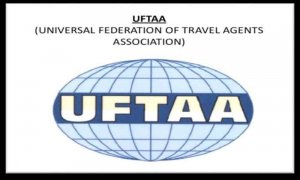History of Tour Guiding
Tour guiding is considered as one of the oldest occupations/professions of the west. The evolution of tour guides and the guiding history was classified by Pond (1993) into four periods:
First phase (3000 B.C. to A.D.500)
There are a number of references in history from the Roman Empire to the Middle Age, throughout the renaissance and into the Modern Age. Tourism saw the first major development during the period of the great empires. During this period, travelling was risky, uncertain and time taking.
Also read Tour Guiding in a museum
The ancient Persians, Assyrians and Egyptians used to travel through surface (land) and the waterways. This activity spread and so did the number of guides, they were known as ‘explainers’ or ‘leaders around’ (as they lead the group), who mainly assisted visitors travelling abroad.
Second phase (A. D.500 to A. D.1500)
The second phase is in the period between the fall of Rome and the start of Renaissance known as the Middle Age and for approximately 1000 years from A. D. 500 to 1500. Religious pilgrimage was the most prevalent type of journey by the middle and the upper classes.
The fall of Rome resulted in the decline of the economy and chaos in the social order. The safety and security of the travellers came as a serious concern; therefore the guides had to serve as a pathfinder, safety escort and protector.
Third phase (A.D.1500 to around 1700)
The third phase covered the period of the Renaissance and the Grand Tour, approximately A.D.1500 to around 1700. During the period of renaissance, excursions were taken by the youth of prosperous families who were also called ‘Grand Tourists’ for cultural and educational reasons.
These people (tourists) were expected to enrich their knowledge through long journeys while being accompanied by a guide who gave them information about tourist’s places to sightsee, guides in this period came to be known as ‘cicerone’.
The word cicerone derives from Cicero, the most esteemed tour guide in the European society. The guide was expected to be well versed in many practical subjects, areas, be articulate and be multi-lingual.
Fourth Stage (post 1700)
Mr. Jan Carlzon (the former president of Scandinavian Airlines) termed the exact instant when the customer (here tourists) has a direct contact with any of the front-line employees/ staff as the ‘moment of truth’. This idea has had a marked influence on the service industry (tourism and travel is a part of the service industry) and is now globally accepted (Pond, 1993).
Also read Walking Tour
Once the tourist arrives at the tourist destination, the tour guide becomes responsible throughout the tour as they are in regular touch with the tourist or traveller.
A tour guide’s job is physically and virtually demanding. (www.aitt.asn.au) (http://www.123helpme.com/brief-history-of-tour-guide-preview.asp?id=259328 accessed on 29th Jan.’2017 and Works Cited Principles and ethics of Tour
Phases in Tour Guiding
First Phase (3000 B.C. to A.D.500)
Second Phase (A. D.500 to A. D.1500)
Third Phase (A.D.1500 to around 1700) Fourth Phase (post 1700)
Also read Present status of Tour Guides
Tour Guiding
A Tour Guide is a person employed to show the tourist around places of interest. The Activity of guiding tourists during a tour is known as tour guiding. Tour guiding is ancient activity.




